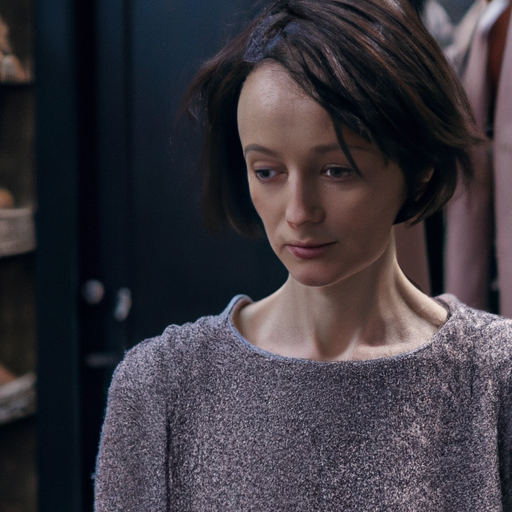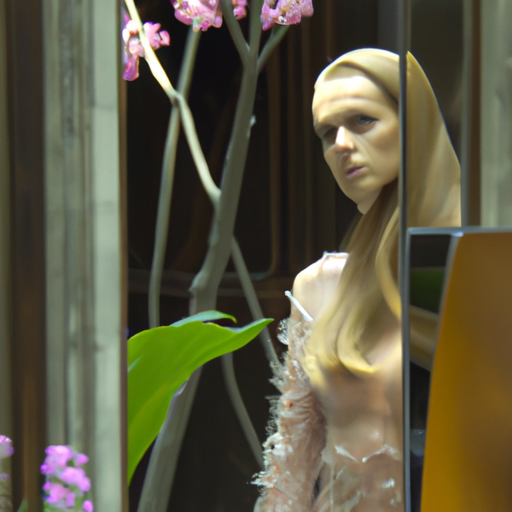Table of Contents
- Introduction
- Exploring the Iconic Style of Peter Lindbergh’s Fashion Photography
- How Peter Lindbergh Revolutionized the Fashion Photography Industry
- The Impact of Peter Lindbergh’s Naturalistic Aesthetic on Fashion Photography
- Examining the Legacy of Peter Lindbergh’s Fashion Photography
- Celebrating the Life and Work of Peter Lindbergh, the Master of Fashion Photography
- Conclusion
«Capturing the Beauty of Fashion with Peter Lindbergh’s Vision»
Introduction
Peter Lindbergh is one of the most influential fashion photographers of all time. His iconic images have graced the covers of countless magazines, including Vogue, Harper’s Bazaar, and W. His signature style of black and white photography has become synonymous with the fashion industry, and his work has been credited with helping to redefine the standards of beauty in the industry. Lindbergh’s work has been praised for its naturalistic approach, which often features models in minimal makeup and clothing. His photographs have been described as timeless, capturing the essence of the moment and the beauty of the human form. Lindbergh’s influence on fashion photography is undeniable, and his legacy will continue to inspire generations of photographers to come.
Exploring the Iconic Style of Peter Lindbergh’s Fashion Photography
Peter Lindbergh is one of the most iconic fashion photographers of all time. His work has been featured in countless magazines, campaigns, and exhibitions, and his influence on the fashion industry is undeniable. Lindbergh’s style is characterized by a unique blend of realism and fantasy, and his images often feature strong, independent women in natural settings.
Lindbergh’s photography is often described as «raw» and «unfiltered,» and he is known for his use of natural light and minimal retouching. He often shoots on location, and his images often feature a sense of movement and energy. He is also known for his use of black and white photography, which adds a timeless quality to his work.
Lindbergh’s images often feature strong female characters, and he is known for his ability to capture the beauty and strength of women. He often works with models of all ages and sizes, and his images often feature a sense of vulnerability and strength. He is also known for his use of natural poses and expressions, which add a sense of realism to his work.
Lindbergh’s work has been featured in countless magazines, campaigns, and exhibitions, and his influence on the fashion industry is undeniable. His iconic style has been imitated by many photographers, and his work continues to inspire and influence the fashion industry today.
How Peter Lindbergh Revolutionized the Fashion Photography Industry
Peter Lindbergh revolutionized the fashion photography industry in the late 1980s and early 1990s. His unique style of photography, which focused on natural beauty and minimalism, was a stark contrast to the heavily airbrushed and overly-stylized images that had become the norm in the industry.
Lindbergh was born in Germany in 1944 and began his career as a photographer in the late 1970s. He quickly gained recognition for his work, which featured raw, unretouched images of models in natural settings. His photographs often featured models in simple clothing, with minimal makeup and no retouching. This style was a radical departure from the heavily-stylized images that had become the norm in the fashion industry.
Lindbergh’s work was highly influential in the fashion industry, and his photographs were featured in some of the most prestigious fashion magazines of the time, including Vogue, Harper’s Bazaar, and Elle. His photographs were also featured in advertising campaigns for some of the world’s most iconic fashion brands, such as Calvin Klein, Chanel, and Dior.
Lindbergh’s influence on the fashion industry was far-reaching. His photographs helped to redefine beauty standards, and his focus on natural beauty and minimalism helped to create a more inclusive and diverse representation of beauty in the fashion industry. His work also helped to create a more realistic and honest representation of women in fashion photography.
Lindbergh’s influence on the fashion industry is still felt today. His photographs continue to be featured in some of the world’s most prestigious fashion magazines, and his style of photography is still highly influential in the industry. His legacy as a fashion photographer will continue to be felt for years to come.
The Impact of Peter Lindbergh’s Naturalistic Aesthetic on Fashion Photography

Peter Lindbergh’s naturalistic aesthetic has had a profound impact on fashion photography. His work has been credited with revolutionizing the industry, and his influence can be seen in the work of many contemporary fashion photographers.
Lindbergh’s approach to fashion photography was characterized by a focus on natural beauty and a rejection of the heavily retouched, airbrushed images that had become the norm in the industry. He sought to capture the essence of his subjects, emphasizing their individual personalities and unique features. He also sought to create a sense of intimacy between the viewer and the subject, often shooting in natural settings and using natural light.
Lindbergh’s approach to fashion photography was revolutionary in its time, and it has had a lasting impact on the industry. His work has inspired many photographers to embrace a more naturalistic aesthetic, and to focus on capturing the beauty of their subjects rather than relying on heavy retouching and airbrushing. His influence can be seen in the work of many contemporary fashion photographers, who often strive to capture the essence of their subjects in a more naturalistic way.
Lindbergh’s naturalistic aesthetic has also had an impact on the fashion industry as a whole. His work has helped to redefine beauty standards, emphasizing the beauty of natural features and rejecting the idea that beauty must be heavily retouched and airbrushed. His work has also helped to create a more inclusive fashion industry, as his images often feature models of all shapes, sizes, and backgrounds.
In conclusion, Peter Lindbergh’s naturalistic aesthetic has had a profound impact on fashion photography and the fashion industry as a whole. His work has inspired many photographers to embrace a more naturalistic approach to fashion photography, and his images have helped to redefine beauty standards and create a more inclusive fashion industry.
Examining the Legacy of Peter Lindbergh’s Fashion Photography
Peter Lindbergh was one of the most influential fashion photographers of the 20th century. His work was characterized by a unique style that combined elements of classic portraiture with a modern, edgy aesthetic. His images were often described as “raw” and “unfiltered”, and he was known for his ability to capture the essence of his subjects. Lindbergh’s work was highly influential in the fashion industry, and his legacy continues to be felt today.
Lindbergh’s career began in the late 1970s, when he began shooting for magazines such as Vogue and Harper’s Bazaar. His work quickly gained recognition for its unique style, which was characterized by a focus on natural beauty and a rejection of the heavily airbrushed images that were popular at the time. He was also known for his use of natural light and his ability to capture the personality of his subjects.
Lindbergh’s work was highly influential in the fashion industry, and his images have become iconic. He was known for his ability to capture the essence of his subjects, and his images often featured strong, independent women. He was also known for his use of black-and-white photography, which he believed was more honest and authentic than color photography.
Lindbergh’s influence can still be seen today in the fashion industry. His images have become iconic, and his style has been adopted by many photographers. His work has also been credited with helping to redefine beauty standards in the fashion industry, and his images often featured strong, independent women.
The legacy of Peter Lindbergh’s fashion photography will continue to be felt for years to come. His unique style and ability to capture the essence of his subjects have made him one of the most influential fashion photographers of the 20th century. His work has helped to redefine beauty standards in the fashion industry, and his images continue to inspire photographers today.
Celebrating the Life and Work of Peter Lindbergh, the Master of Fashion Photography
Peter Lindbergh, the renowned fashion photographer, was a master of his craft. He was born in 1944 in Germany and began his career in the 1970s. He quickly rose to fame for his unique style of photography, which focused on capturing the natural beauty of his subjects.
Lindbergh was known for his use of natural light and his ability to capture the essence of his subjects. He often used black and white photography to emphasize the beauty of his models. He was also known for his use of minimal makeup and styling, which allowed the models to look more natural and authentic.
Lindbergh was a pioneer in the fashion industry, and his work has been featured in countless magazines and campaigns. He was the first photographer to shoot a Vogue cover with an all-black cast, and he was also the first to shoot a Pirelli calendar with an all-black cast. His work has been featured in campaigns for some of the world’s most iconic brands, including Dior, Calvin Klein, and Chanel.
Lindbergh was also a passionate advocate for diversity in the fashion industry. He was a vocal supporter of the #MeToo movement and was a strong advocate for the rights of women in the industry. He was also a vocal critic of the industry’s reliance on Photoshop and airbrushing, which he believed was damaging to the self-esteem of models.
Lindbergh passed away in 2019, but his legacy lives on. His work has been celebrated by the fashion industry and his influence can still be seen in the work of many photographers today. He will always be remembered as a master of fashion photography and an advocate for diversity and authenticity in the industry.
Conclusion
Peter Lindbergh’s fashion photography has had a lasting impact on the fashion industry. His unique style of capturing the beauty of the human form and his ability to create stunning images has made him one of the most influential photographers of all time. His work has inspired countless photographers and designers, and his legacy will continue to influence the fashion world for years to come.

































